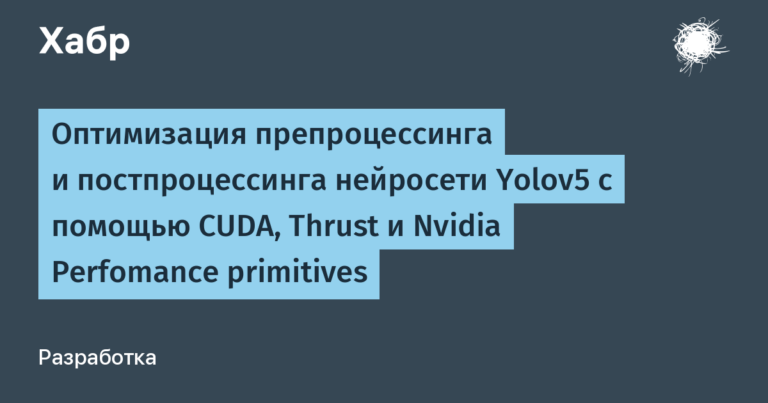17 programming courses for children in Moscow

We propose to consider a number of IT areas of additional education for children and adolescents in a format close to home. Programming, game development, 3D modeling, graphic design – examples. Every child will be able to find activities to their liking and take their first steps in IT.
We are in Pixel We teach children to program, create games and websites, model, carry out creative digital projects and more. Under the guidance of sensitive teachers, even young students without experience successfully master complex languages, various programs, including professional ones, and acquire valuable skills: creativity and logical thinking, attentiveness and perseverance, the ability to work in a team, responsibility, etc.
We would like to talk about programming courses for schoolchildren in Moscow, as well as related areas related to IT. We will describe the available options, and at the end we will provide a link to a page where you can choose a branch for studying near your home. Additionally, we will provide answers to frequently asked questions from parents of our students.
Classes at a programming school for children in Moscow: 17 directions
We will move in order from simple to complex and link the sequence of courses to areas and ages. This will simplify navigation and help you immediately turn to the section that matches the child’s interests and general level of development.
1. Programming and game development: Scratch Junior and Kodu Game Lab
Age: 5–7 years
How many: 9 months

In classes, preschool children:
Meet Scratch Jr. This is a children's programming language and environment where you need to write code using bright blocks. Working with Scratch Junior tools is reminiscent of working with Lego, so the direction is well suited for preschoolers;
Learn to use Kodu Game Lab. It is a visual environment designed for creating simple games. The simplicity is due to the fact that projects will have to be coded using structures reminiscent of blocks characteristic of Scratch.
As a result of mastering the course, students begin to better understand the structure of a computer and application programs, and also acquire skills in block coding and creating games.
2. Programming in Scratch
Age: 6–9 years
How many: 9 months

This computer course for children in Moscow is aimed at introducing students to the Scratch environment. It is usually called the older brother of the Junior version, but the potential is noticeably wider: the blocks contain text commands, which is a plus from the point of view of developing an understanding of how more complex languages work.
After becoming familiar with the theory and completing practical tasks using visual structures as an example, each student:
Will understand the creation of simple games, cartoons and animation;
He will better understand the programming process and delve into its logic.
3. Coding and modeling in TinkerCAD
Age: 6–9 years
How many: from 12 lessons

During the lessons, children will become familiar with TinkerCAD, a service designed for three-dimensional design, block programming and solving other problems. Guys in class:
Try their hand at 3D modeling and visual coding;
Learn to work with a computer and programs;
Will acquire design and engineering skills;
Algorithms will understand, etc.
4. Block coding in Minecraft
Age: 7–10 years
How many: 12 lessons

The emphasis is on Code Builder, a feature of Minecraft Education Edition that allows you to:
Write block programs;
Create scripts with commands in Python and JavaScript;
Manage in-game logic, events, characters, etc.
The game form of learning is a plus: it simplifies immersion in the basics, developing an understanding of algorithms and other programming fundamentals.
5. Computer literacy
Age: 7–10 years
How many: 9 months

This course at the Moscow IT school for children Pixel is aimed at children who do not fully understand the structure of a computer. Lessons cover the following topics:
PC handling;
Safe work on the Internet;
Using application programs using the example of Docs, Sheets and Slides – services from Google designed for creating and editing text, tables and presentations, respectively.
The course also includes a small block of theory and practice on programming in the Python language.
6. Advanced Scratch
Age: 8–12 years
How many: 9 months

As in the case of the second point in today’s selection, the classes are built around block programming using the example of using the Scratch language and the environment of the same name. We have already described the content of the direction, we will not repeat it, we will only note that students will have to master a non-boring theory and, using bright blocks of visual code, complete several practical projects in the form of games, animation and interactive stories.
The difference from the basic introductory course is an expanded and more complex program. But even a beginner can handle it.
7. Graphic Design for Beginners: Illustrator and Photoshop
Age: 8–13 years
How many: 9 months

A distinctive feature of the direction is the emphasis on digital creativity. Children will be able to discover the corresponding world for themselves during classes while getting acquainted with:
Illustrator. This is a program designed to create vector graphics;
Photoshop. This editor is used by professionals to work with photographs and illustrations.
Students will understand the creation of graphics and the development of design concepts, develop creativity and spatial thinking.
8. Web design for beginners: working with Figma and Tilda tools
Age: 9–13 years
How many: 9 months

Students on the course:
They will master Figma – a special service, a graphic editor in which you can create prototypes of websites, as well as remote applications. There is the possibility of group use, which is a plus from the point of view of classroom learning;
Get acquainted with Tilda – a block constructor designed for creating websites, online stores and for carrying out similar projects;
Gain creative skills;
Will develop spatial thinking.
This is another area of digital creativity that will suit creative guys.
9. Python Programming in Minecraft
Age: 9–13 years
How many: 9 months

The lessons are intended for beginners and experienced students interested in writing code. But even if this area does not interest you, then Minecraft will help you develop a corresponding hobby and gradually turn it into a hobby. It is for this game universe that students will create mods by writing code in Python.
As before, the game background stimulates interest and significantly improves the memorization of theory, which is an advantage from the point of view of consolidating useful skills. An additional advantage of the approach is that it makes it easier to dive into the basics of using Python: the incentive in the form of developing mods makes it easy to master various commands and structures, so the first steps will be as simple as possible.
10. Programming and creating games: Lua and Roblox
Age: 9–14 years
How many: 9 months

During the lessons, students:
Get to know Roblox and Roblox Studio. This is an online gaming platform and engine respectively. They are used for game development, simulation and more;
Learn Lua. This is a scripting coding language, in conjunction with designated environments, used for programming characters, virtual objects, objects and even entire game worlds.
Classes will bring you closer to writing code in text languages, lead to the formation of game development skills and more.
11. 3D modeling in Roblox
Age: 8–13 years
How many: 9 months

This is another course for creative guys that will help:
Understand 3D modeling;
Gain game design skills;
Improve creativity and develop spatial thinking.
You will become familiar with various tools designed for 3D modeling and developing design projects for games.
12. Coding and game creation: C# and Unity engine
Age: 10–14 years
How many: 9 months

This programming course for teenagers in Moscow is relatively difficult: you will have to master C# and Unity. But you shouldn’t assume that the child won’t cope: all the same principles are implemented as before. In a playful and exciting way, children will learn to code in C# and create characters, models of objects and objects, and full-fledged games using the Unity engine.
Little programmers will gradually move from boring theory to exciting practice and will be able to consolidate their skills, hone them and bring them to an advanced level.
13. Advanced Python
Age: 10–14 years
How many: 9 months

The course is aimed at children already familiar with the Python language, but the educational program is also suitable for beginners. Thanks to classes with a teacher, you will be able to:
Master Python at an advanced level;
Work with the VS Code code editor;
Learn to program game projects and more.
14. Web Development: HTML, CSS and JavaScript
Age: from 12 years old
How many: 9 months

The direction involves training in website creation. The guys will have to master:
HTML – hypertext markup language;
CSS – style sheets, or a tool for editing the visual component of pages and sites;
JavaScript is a programming language used to develop web resources, browser applications, and more.
As a result, every child will be able to learn how to create functional websites and complete similar projects.
15. Advanced web design: deepening into Figma and Tilda
Age: from 12 years old
How many: 9 months

The content of the course is almost no different from the already noted program intended for primary schoolchildren. Therefore, we will briefly describe the results. This:
Skills in using Figma and Tilda;
Development of creative abilities and spatial thinking;
Immersion in web design and the formation of creativity.
16. Advanced Graphic Design: Photoshop and Illustrator
Age: from 12 years old
How many: 9 months

This is no longer a children's course, but a teenage course, which is the basic difference from the previously presented program. Let us briefly describe the results. This:
Skills in working with Illustrator and Photoshop tools;
Experience in creating and editing graphics;
Improved creativity and spatial thinking.
17. 3D modeling in Blender
Age: 13–17 years old
How many: 9 months

Today's selection ends with the direction of three-dimensional modeling in the Blender program. During lessons, children:
Learn to create and edit 3D models. Blender will help with this;
Will acquire basic game design skills;
They will improve their creative abilities and learn to think spatially.
General questions and answers
Below we present answers to frequently asked questions that students' parents ask us.
1. How to find a branch for training near your home?
For this purpose it is provided special page. Click here to find your nearest branch.
2. How many children are in one group?
We are recruiting mini-groups with up to 12 students.
3. Is it necessary to immediately sign up for the 9-month training?
Almost all of the courses presented consist of three modules. One includes 12 lessons. In this case, you can select only one module.
4. Is there a schedule?
In-person courses are held according to the group schedule once a week.
5. What do you need for classes?
We undertake the preparation and conduct of lessons. You don't need to buy anything extra. All you need to do is decide on a branch, choose a direction, pay for a subscription and stick to the schedule.




